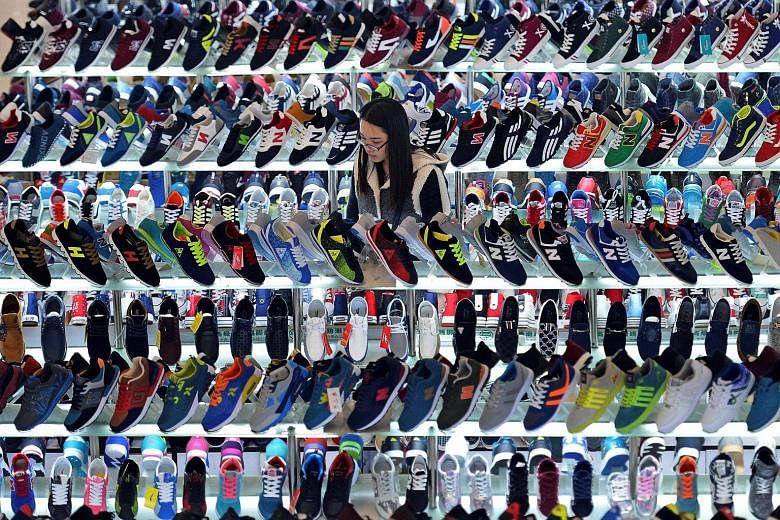Investment manager Lisa Ren does not have an upper limit on how much she intends to spend on her children's education.
She spends an average of around 8,000 yuan (S$1,630) a month on enrichment lessons such as piano, violin and English for her daughter, six. And she expects to spend more in this area as her daughter grows. For now, her focus is on the older child as her younger one is still a baby.
The 31-year-old Beijing resident said many of those born after 1980 have consumption habits that are different from those of their parents' generation.
Ms Ren won't bat an eyelid at paying 10,000 yuan for a branded handbag at least three times a year. But to her mother, who is in her 50s, that amount is "too ridiculous".
"My peers and I are generally better educated, and we have had a relatively good life growing up," said Ms Ren, adding that she has seen her income rising steadily over the years, which gives her confidence to keep up with her spending habits.
On average, her family of four spends 30,000 yuan a month on food, clothing and transport, as well as her children's education, travels and wellness and health products.
-
CHINA'S ECONOMY AT A GLANCE
-
• GDP for the first half of 2016: +6.7 per cent
• Agriculture sector: +3.1 per cent
• Manufacturing sector: +6.1 per cent
• Services sector: +7.5 per cent
OTHER INDICATORS FOR THE FIRST SEVEN MONTHS OF 2016
• Industrial production: +6 per cent
• Urban fixed asset investment: +8.1 per cent
• Private investment: +2.1 per cent
• Retail sales: +10.2 per cent
The changing spending behaviour of Chinese consumers and their increased spending power have become a strong driver of growth in the services sector.
In the first half of this year, it expanded faster than the overall economy. At 7.5 per cent, the services sector outpaced growth in manufacturing and agriculture, which came in at 6.1 per cent and 3.1 per cent respectively.
The services sector comprises 54.1 per cent of the economy, up 1.8 percentage points from a year earlier.
One of the fastest-growing sub-sectors - at 8.9 per cent for the first half of the year compared with the same period a year earlier - is a broad category known as "other services". This includes areas such as entertainment and culture, education and healthcare, where the younger and wealthier Chinese consumers are spending their money.
More of them are also travelling overseas and domestically.
According to data from the China National Tourism Administration, domestic tourist numbers rose 10.5 per cent to 2.2 billion in the first half of this year. Domestic travel revenues climbed 12.4 per cent to 2.25 trillion yuan compared with a year earlier.
Housewife Zheng Li, 40, said she makes it a point to travel at least twice a year with her five-year-old daughter and her husband, who is a teacher, during the summer and winter holidays.
"We didn't use to travel that much before we had our daughter. We hope to use travel to widen her horizons as we didn't have the means back then when we were growing up," said Ms Zheng, who lives in Shijiazhuang, a third-tier city in northern Hebei province.
For every trip, her family would spend up to 20,000 yuan on lodging, food, transport and sightseeing.
E-commerce is another strong driving force of China's growth.
In the first seven months of this year, online sales grew 27.5 per cent year on year, outstripping the overall 10.2 per cent growth in retail sales in the same period.
Online shopping revenues are expected to double to 7.5 trillion yuan in 2018 from last year, according to estimates by research consultancy firm iResearch.
Bank of Singapore's investment strategist, Mr James Cheo, wrote in a note that China's digital consumers have emerged to be a new growth locomotive for the Chinese economy.
But HSBC economist Julia Wang told The Straits Times she takes a neutral stance on China's consumption story.
She noted that consumption and the services sector have been the biggest growth drivers of the economy in the past two years, and will continue to be so this year and the next.
Yet, it is not realistic to expect consumption growth to be much bigger than current levels, she said.

